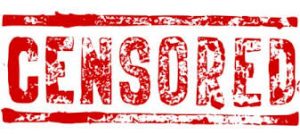 What makes a book “bad”? Examining both sides of a censorship dispute reveals cultural battlegrounds over topics like sex, race, religion, political viewpoints, language and morality. Students working in pairs will examine a censorship challenge in their locality. In exploring both sides of the specific case, students will examine the history of the censorship theme and of the challenged work, placing the case in both local and historical contexts. Themes to explore could include authorial intent, reasoning of adoption, and the basis for challenging and/or banning the book from use. Among the cases students can choose are: challenges to school reading curriculum, efforts to ban or burn books, or the work of 19th and 20th century anti-vice societies. Students will use primary source materials, newspaper coverage, secondary literature, and oral history interviews to tell their stories. The result will be a web-based presentation on the case, using digital visualization tools such as maps, story maps, timelines or text analysis to add a new dimension to their interpretation.
What makes a book “bad”? Examining both sides of a censorship dispute reveals cultural battlegrounds over topics like sex, race, religion, political viewpoints, language and morality. Students working in pairs will examine a censorship challenge in their locality. In exploring both sides of the specific case, students will examine the history of the censorship theme and of the challenged work, placing the case in both local and historical contexts. Themes to explore could include authorial intent, reasoning of adoption, and the basis for challenging and/or banning the book from use. Among the cases students can choose are: challenges to school reading curriculum, efforts to ban or burn books, or the work of 19th and 20th century anti-vice societies. Students will use primary source materials, newspaper coverage, secondary literature, and oral history interviews to tell their stories. The result will be a web-based presentation on the case, using digital visualization tools such as maps, story maps, timelines or text analysis to add a new dimension to their interpretation.
Teams of two students from five different COPLAC campuses came together in the Spring of 2018 to build websites showing the research that they conducted on local cases of book censorship and challenges. The course was offered again in Spring 2019, resulting in five additional websites.
The course was team-taught by:

Leave a Reply